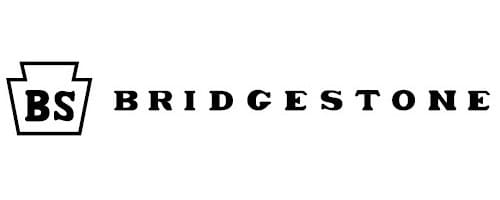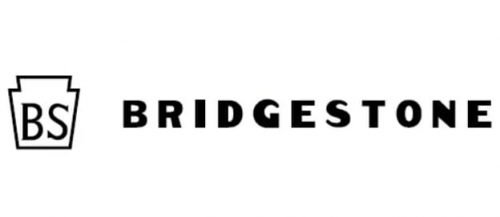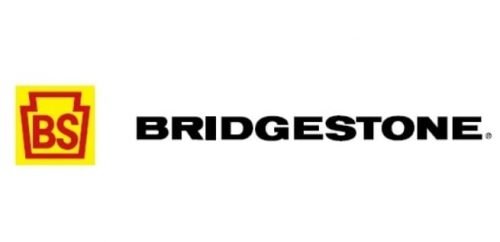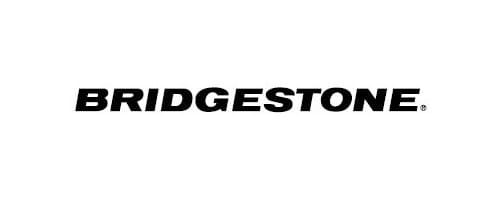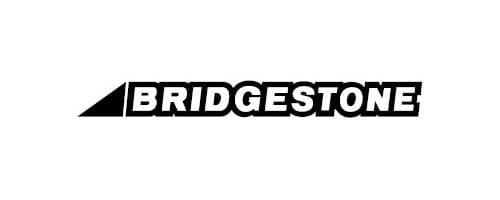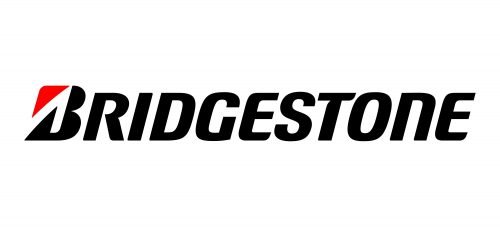The logo of the Japanese auto and truck parts manufacturer Bridgestone Corporation has gone a long way before it adopted its current dynamic style. It has been modified around ten times since 1931, when the company was founded.
Meaning and history

Bridgestone was founded in Japan but now is known in the whole world. In 2021 the company was named the world’s largest manufacturer of tires, leaving such gifts as Michelin and Continental way behind.
Founded in 1931, the company initially specialized mostly in the production of the parts for various types of vehicles, and it still does, but tires are now the main focus.
As for the visual identity, Bridgestone had its logo redesigned pretty often throughout the years, but the lettering has always been the main part of any badge. In the very beginning, the inscription was supported by an emblem, and in the middle of the 1980s, the graphical part of the Bridgestone badge became a part of the logotype.
What is Bridgestone?
Bridgestone is the name of the famous Japanese manufacturer of automobile parts, which is mostly known for its tires. The company was established in 1931, and by today has turned into one of the global leaders in the tire segment, operating worldwide, and having offices on all the continents.
1931 – 1940
The original Bridgestone logo showcased the name of the brand paired with an emblem. The emblem included the letters “BS” inside an intricate shape that symbolized the “bridgestone” from the company’s name.
1940 – 1950
The typography was slightly updated, which resulted in bolder letters. This made the wordmark better legible without sacrificing its classic style with serifs.
1950 – 1974
The structure remained the same but the typeface used for the name of the company lost the serifs. Due to this, the wordmark grew more minimalist. The glyphs were deliberately uneven, to create the impression of something made up of natural stone.
The “BS” combination still featured tiny serifs.
1974 – 1977
The glyphs in the wordmark became wider, which damaged the legibility. The “stone” symbol adopted a yellow background, while the outlines became red.
1977 – 1980
The symbol disappeared, while the name of the brand was italicized. It completely lost its “stony” style.
1980 – 1984
While the previous logo looked dynamic and legible, it lacked a unique touch. In 1980, the company’s design team tried to tackle this problem.
They introduced a black triangle to the left of the wordmark and added black shades to the letters. In a way, the wordmark was now reminiscent of a truck. The resemblance formed a symbolic link with the industry in which Bridgestone works.
1984 – 2011
The era of more professional, sleeker logos started.
The black triangle disappeared. And yet, you could still see this shape in the lower part of the letter “B.” In other words, the designers reduced the number of elements without sacrificing the meaning, which was a step forward.
The top of the “B” was colored red. For one, this helped to shape the “triangle” below. Also, it added a vivid accent to the otherwise monochrome design. The “B” could be used as a standalone emblem.
2011 – Today
According to the explanation on the company’s official website, the updated Bridgestone logo conveys “coexistence with people around the world,” as well as “flexible strength” and “the feeling of speed in adjusting to change,” whereas the previous version conveyed “strength” and “physical speed.”
On a more practical note, the name of the brand is now larger than it used to be in the previous version, which makes it also better legible. The type has grown simpler and easier to read. It is also lighter and smoother than its predecessor. The top corner of the “B” is rounded. There have been also several other minor alterations.
Font
In 1950, the original serif types were replaced by the custom sans inspired by the shape of natural stone. A generic bold sans was introduced in 1974. It was italicized in 1977. Since 1984, the wordmark has gone through two dynamic custom typefaces.
Colors
The original black-and-white color scheme was enhanced by yellow and red in 1974. The rather awkward palette, which didn’t really fit the overall design, was again replaced by black and white three years later.
Eventually, in 1984, the Bridgestone logo adopted a red accent making the design more vivid.



